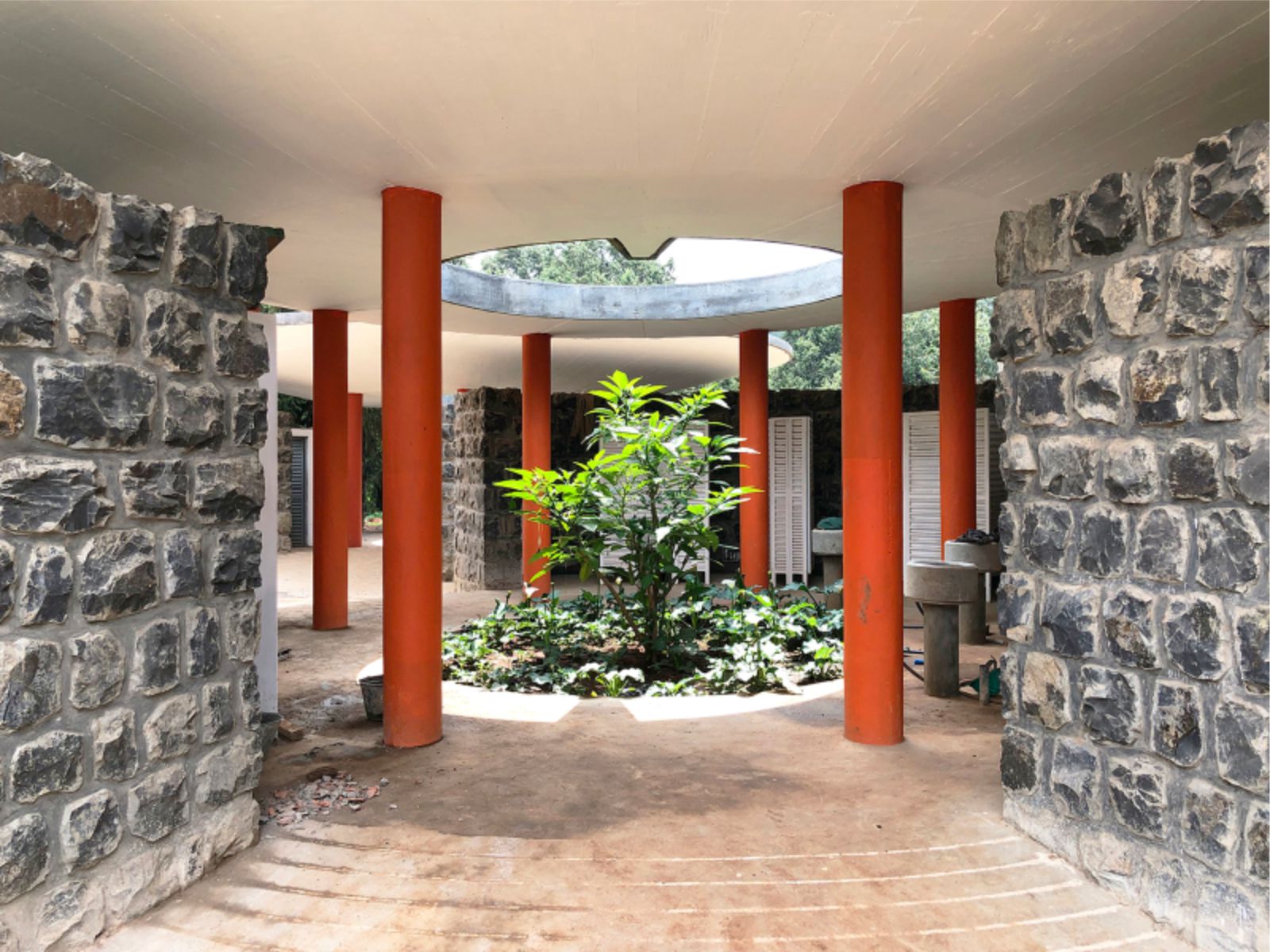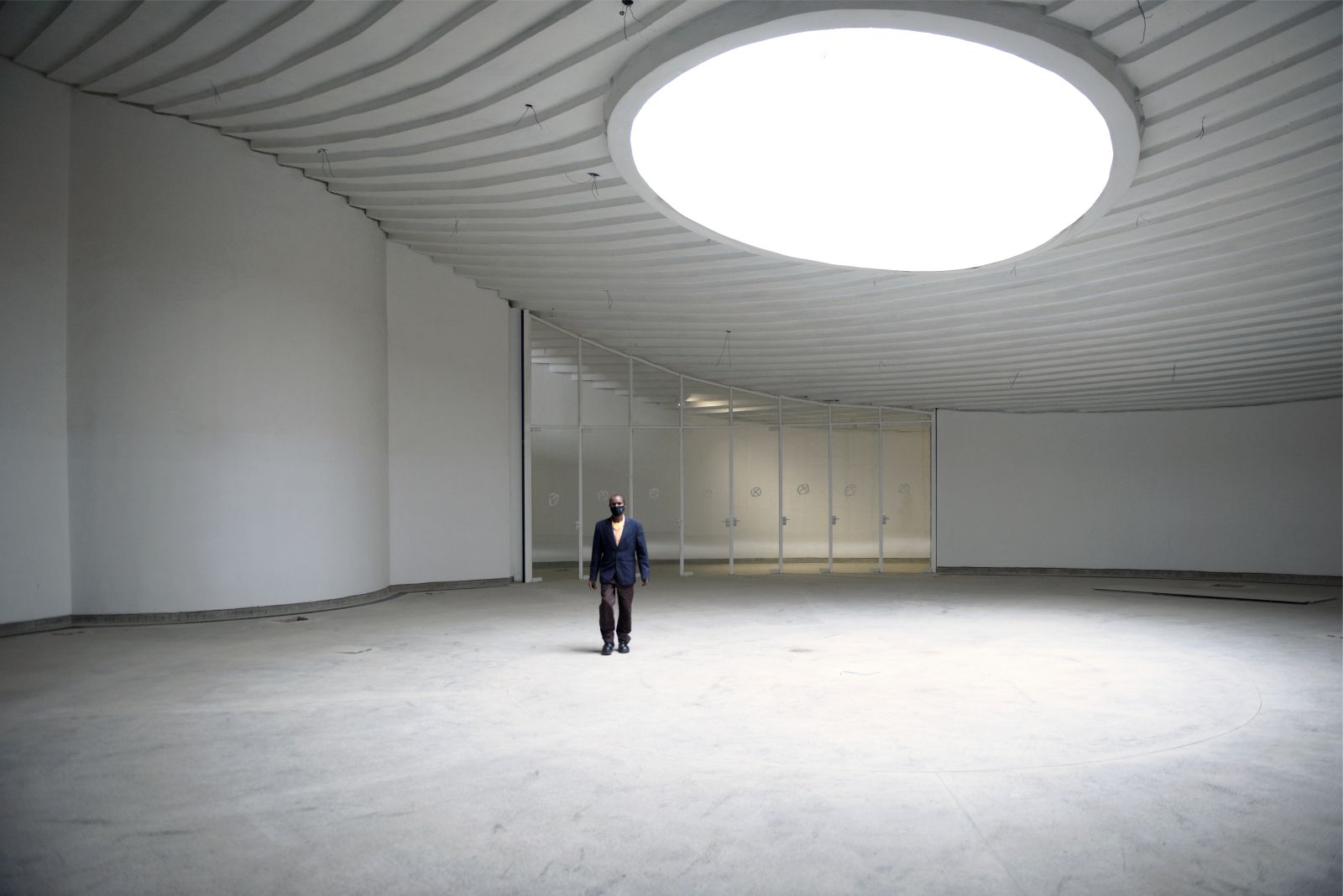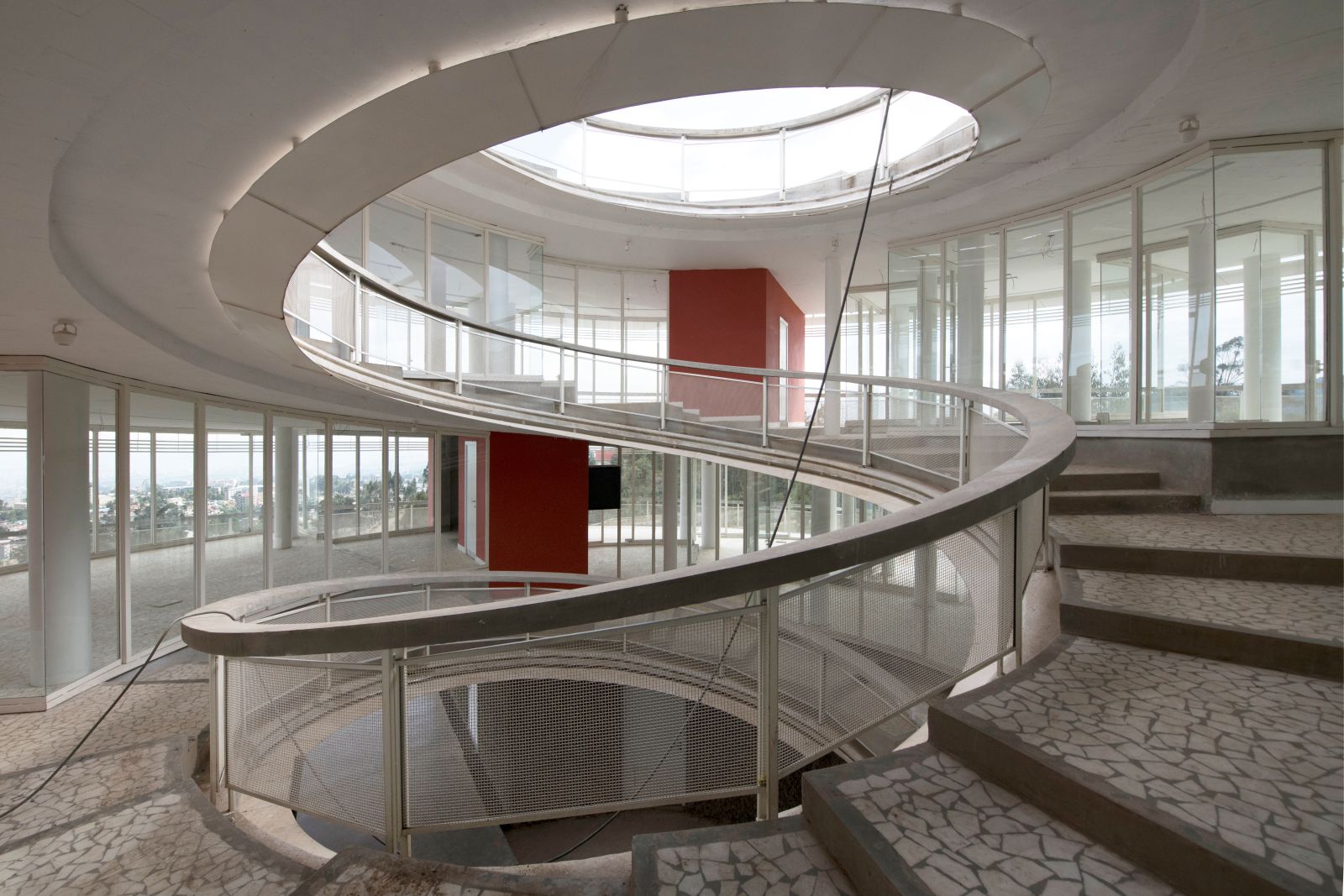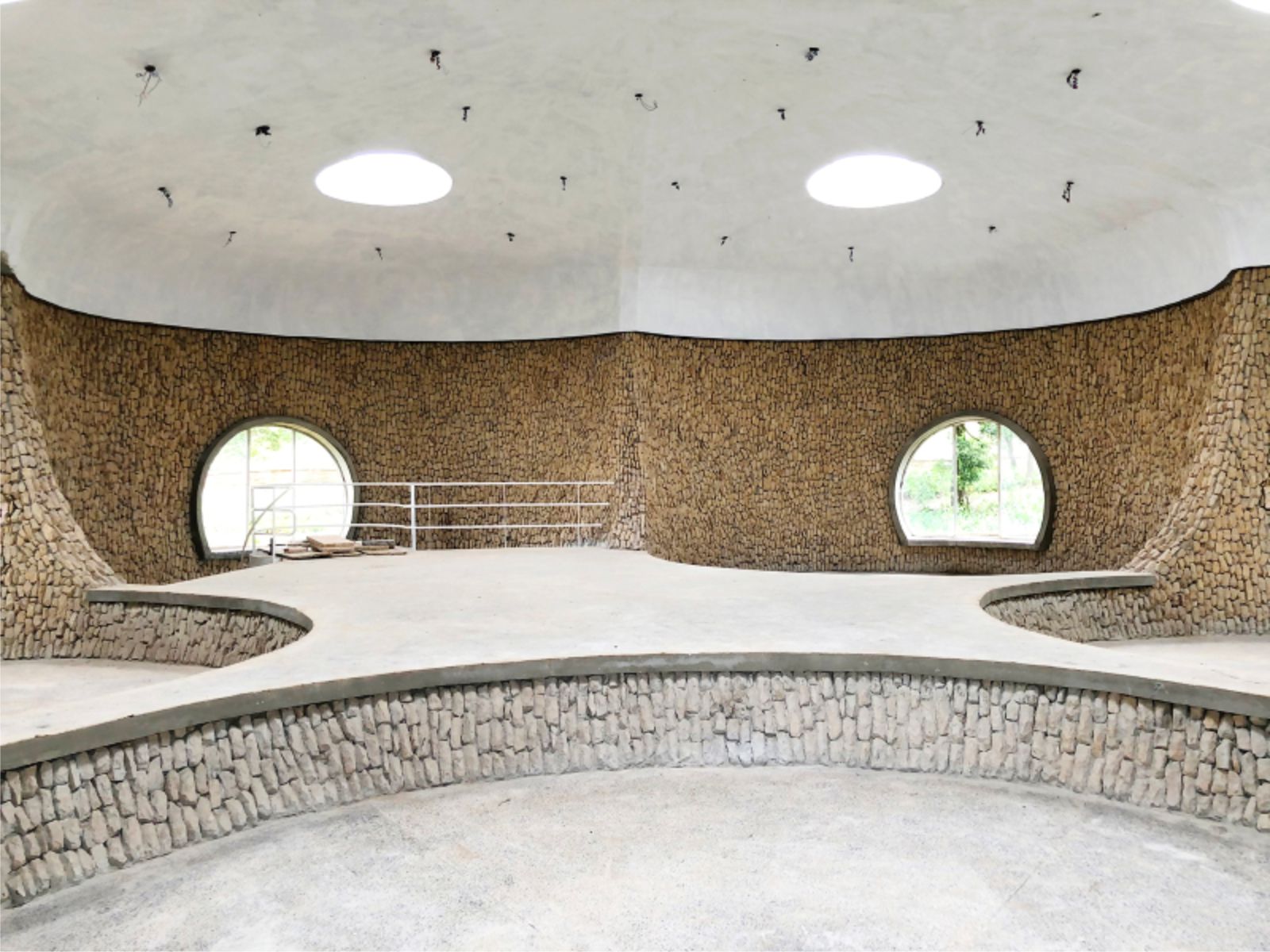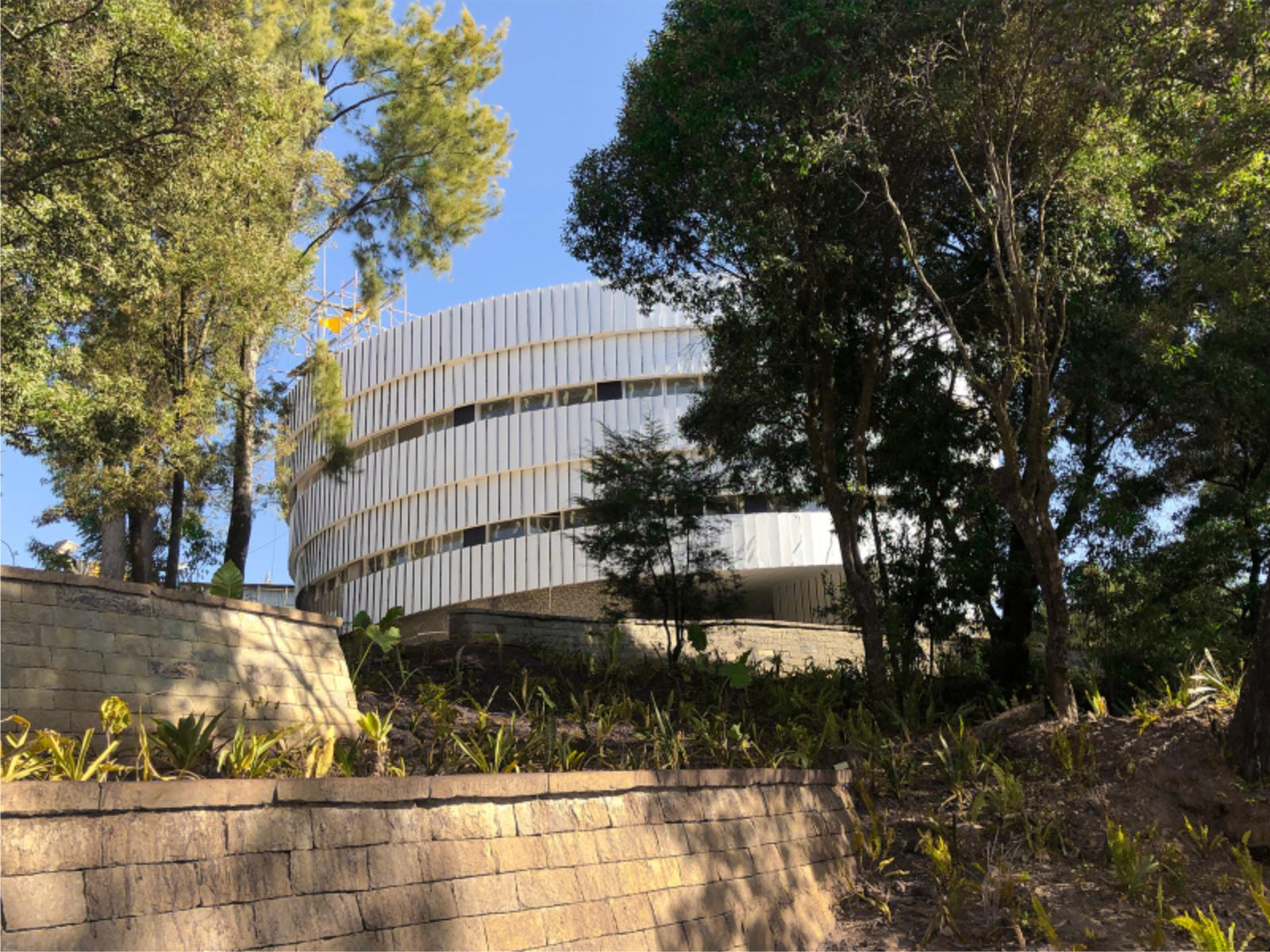Studio Other Spaces, led by artist Olafur Eliasson and architect Sebastian Behmann, has conceptualised an expansive, multifaceted landscape that connects 7 pavilions and 5 buildings along a meandering 2.4 km walking path. Constructed by combining local methods, crafts, and materials with modern technology, Meles Zenawi Memorial Park invites visitors to co-produce its purpose and meaning, while resonating with the nation’s past and future.
By designing a socially horizontal space, SOS has expanded the meaning of the word ‘memorial’ beyond the memory of a single leader to include the many memories of the countless people, whether from the cities or countryside, whether old or young, rich or poor, who make up the country of Ethiopia and who themselves have lived its history. Located on the northern edge of Ethiopia’s capital, Addis Ababa, Meles Zenawi Memorial Park is intended to be widely accessible to the community.

The overall design strives to facilitate exchange through recreation and education, and to hold space for contemplation and debate of the country’s histories, as well as paths forward. The hope is that the memorial park can accommodate the many, often complex feelings and reflections around Meles Zenawi’s legacy – from celebration and optimism to grief and reckoning. The buildings in the park are rooted in the site and surroundings.
For example, the sun has been used as a tool to enrich the quality of the buildings’ design. As Ethiopia is close to the equator, the sun travels almost the same route every day at a predictable angle. This especially enhances the facades as the light modulates the colours of the walls at different times of day. SOS also turned to a tradition from the old city of Harar: a technique of plastering walls in many layers to build up a unique texture.

Other elements important to local daily life, such as the zones between indoor and outdoor spaces – verandas, porches, and open staircases, which typically serve for gatherings and family life – have been incorporated into the project’s office buildings. Experiencing the park on foot, in relation to one’s body and movement, formed the starting point for the design.
The Park
In 2016 Vogt Landscape joined the project to create curated gardens along the campus path and individual concepts for the landscape surrounding each building. The path follows the topography of the site and boasts flowers, trees, and stones gathered from all regions of the country, achieving a co-existence of naturally and regionally distinctive traits. In addition, the site features water prominently in a number of settings, a tactile gesture to the resource’s continued importance for the growth of the nation.

The Pavilions
Stretching along seven commemorative stations on the western side of the park, a memorial trail traces the childhood, education, and services of Meles Zenawi, aimed at representing the upbringing and political circumstances of his generation and what it could have meant to grow up in Ethiopia during this period.
The Outlook
This exhibition and reception area occupies the site’s most prominent panoramic point and is the campus landmark most visible from Addis Ababa proper. The structure unites various conference and exhibition functions under one large roof. The Outlook’s expansive rooftop terrace offers sweeping views of both the city below and the neighbouring botanical gardens.

The Guest House
A collection of brightly painted, freestanding walls arrayed in concentric rings outlines the perimeter of the Guest House. While they screen the individual residences from view, the segmented walls allow the park to flow through the communal spaces between them, imparting porosity to the building. The vivid colouration of the rough-plastered wall segments tints the spaces between and within the living spaces, creating different chromatic atmospheres according to the intensity of the sunlight.
The Office Building
As structurally dynamic as they are transparent, the Meles Zenawi Foundation offices are housed in an ascending spiral, with walkways wrapped around the Office Building’s interior and exterior, offering a variety of meeting spaces and adaptable work areas. The pervasive use of glass endows the building with cross-sectional visibility. The building’s transparency and flowing sequence of spaces express the openness, introspection, and cooperation that drive the foundation’s work.

The Research Centre
Situated in a terraced landscape, the campus’s Research Centre hosts circular workspaces organised around a central meeting place, which allows for ease of communication among researchers. The building’s unorthodox design creates a striking presence within the landscape and, in a way comparable to how sculpture defines space, frames the public terraces cascading out from beneath it.
The Library
The Meles Zenawi Foundation Library is designed as an ascending and expanding spiral, a shape that gestures to the Library’s possible expansion and to the constant growth potential of knowledge. The spiralling floor is sectioned into alternating collection and reading spaces; calmer zones are contrasted with common areas for exchange that are afforded by the spiral staircase at the centre of the structure. The central spiral, with sunlight from above lighting the space, offers a variety of seating and reading arrangements. Source by Studio Other Spaces.
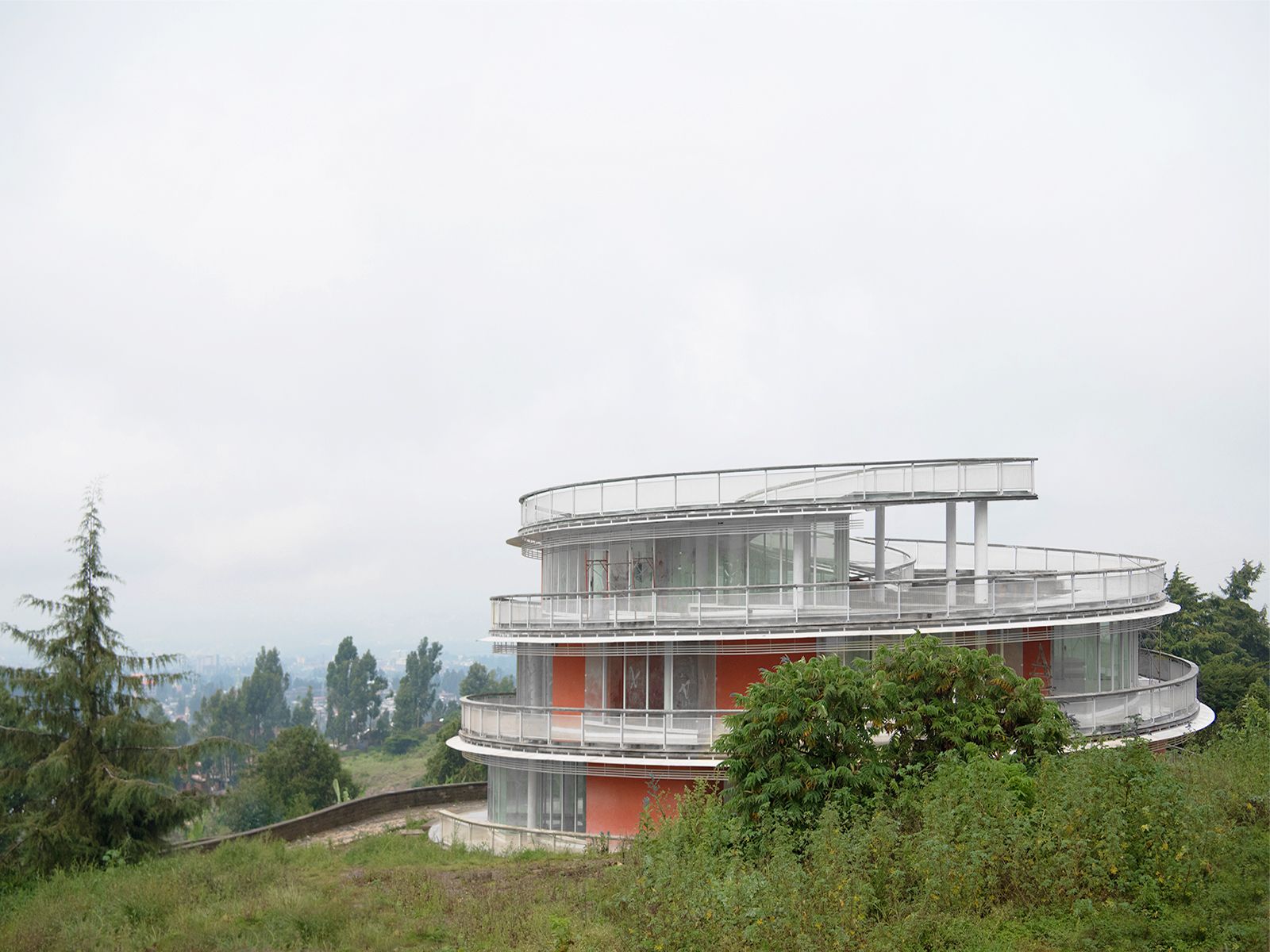
- Location: Addis Ababa, Ethiopia
- Architect: Studio Other Spaces
- Collaborators: Fasil Giorghis Architects, Vogt Landscape
- Client: Meles Zenawi Foundation
- Site Area: 65 hectares
- Date: 2013
- Photographs: VOGT Landscape, Michael Tsegaye, Brook Teklahaimanot, Courtesy of Studio Other Spaces



